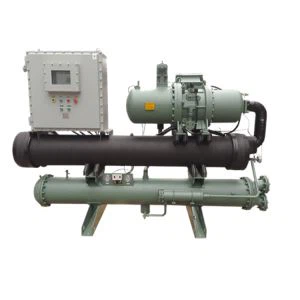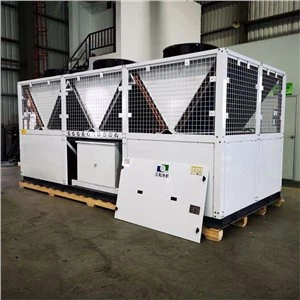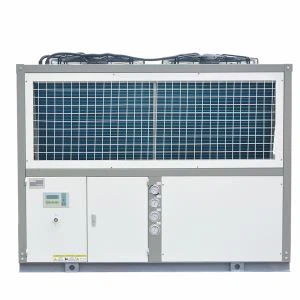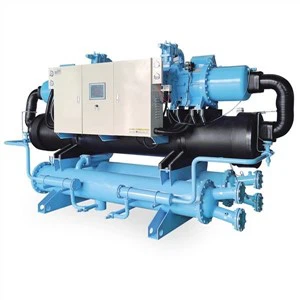Selecting the right refrigerant piping for a water - cooled screw chiller is a crucial step that directly impacts the efficiency, performance, and longevity of the entire cooling system. As a supplier of water - cooled screw chillers, I understand the significance of this process and am here to share some valuable insights on how to make the best choice.
Understanding the Basics of Refrigerant Piping
Refrigerant piping serves as the circulatory system of a water - cooled screw chiller, carrying the refrigerant between the compressor, condenser, expansion valve, and evaporator. The proper selection of piping materials, sizes, and layouts is essential for ensuring optimal refrigerant flow, minimizing pressure drops, and preventing refrigerant leakage.
Factors to Consider When Selecting Refrigerant Piping
Refrigerant Type
Different refrigerants have unique properties, such as pressure, temperature, and chemical reactivity. For example, R - 134a and R - 410A are commonly used refrigerants in water - cooled screw chillers. R - 134a has a lower pressure compared to R - 410A. The piping material and thickness need to be compatible with the specific refrigerant to avoid corrosion and leakage. For instance, copper is a popular choice for most refrigerants due to its good thermal conductivity and corrosion resistance. However, for some high - pressure refrigerants, thicker - walled copper pipes or alternative materials may be required.
System Capacity
The capacity of the water - cooled screw chiller determines the amount of refrigerant that needs to be circulated. Larger capacity chillers require larger diameter pipes to accommodate the higher refrigerant flow rate. A miscalculation in pipe size can lead to excessive pressure drops, which in turn reduces the chiller's efficiency and performance. For example, if the pipe is too small for the system capacity, the refrigerant will experience high - velocity flow, causing increased friction and pressure loss. On the other hand, if the pipe is too large, it can lead to poor oil return and inefficient refrigerant distribution.
Pipe Material
As mentioned earlier, copper is widely used in refrigerant piping due to its excellent thermal conductivity, malleability, and corrosion resistance. It is relatively easy to install and can be bent and joined without significant loss of integrity. However, copper pipes can be more expensive compared to other materials. Steel pipes are another option, especially for larger - scale industrial applications. They are stronger and more durable but may require additional corrosion protection. Aluminum pipes are also used in some cases, offering a lightweight and cost - effective alternative, but they have lower thermal conductivity compared to copper.


Layout and Installation
The layout of the refrigerant piping is also critical. Pipes should be installed with proper support to prevent sagging and vibration, which can cause stress on the joints and lead to leaks. The piping should be routed in a way that minimizes bends and elbows to reduce pressure drops. Additionally, the installation should follow the manufacturer's guidelines and local codes and regulations. For example, there should be adequate clearance around the pipes for maintenance and inspection purposes.
Sizing the Refrigerant Piping
Proper pipe sizing is a complex process that involves considering multiple factors, including refrigerant flow rate, pressure drop, and velocity. There are several methods available for sizing refrigerant piping, such as the equivalent length method and the pressure drop method.
The equivalent length method takes into account the actual length of the pipe as well as the additional length due to fittings, bends, and valves. Each fitting and bend is assigned an equivalent length, which is then added to the actual pipe length to determine the total equivalent length. The pressure drop method focuses on maintaining a specific pressure drop per unit length of the pipe. This method ensures that the refrigerant flow remains within the acceptable range to avoid excessive pressure loss.
It is recommended to use sizing charts and software provided by the refrigerant and piping manufacturers. These resources are based on extensive research and testing and can provide accurate sizing recommendations for different chiller capacities and refrigerant types.
Our Water - Cooled Screw Chillers
At our company, we offer a wide range of water - cooled screw chillers to meet the diverse needs of our customers. Our Industrial Use Screw Water Chiller 2 Compressor is designed for high - capacity industrial applications, providing reliable and efficient cooling. The Water Cooled Screw Compressor Chiller offers advanced features and performance for commercial and industrial settings. And our Industrial Water - cooled Screw Chiller Single Compressor is a cost - effective solution for smaller - scale applications.
Importance of Professional Installation and Maintenance
Even with the right selection of refrigerant piping, proper installation and maintenance are essential for the long - term performance of the water - cooled screw chiller. Professional installers have the knowledge and experience to ensure that the piping is installed correctly, following all the necessary guidelines and standards. Regular maintenance, including inspection of the piping for leaks, corrosion, and damage, can help identify and address potential issues before they become major problems.
Contact Us for More Information
If you are in the market for a water - cooled screw chiller or need assistance with selecting the right refrigerant piping, we are here to help. Our team of experts can provide you with detailed information and guidance based on your specific requirements. Whether you are a small business looking for an efficient cooling solution or a large industrial facility in need of a high - capacity chiller, we have the products and expertise to meet your needs.
Conclusion
Selecting the right refrigerant piping for a water - cooled screw chiller is a multi - faceted process that requires careful consideration of various factors. By understanding the basics of refrigerant piping, sizing it correctly, and ensuring proper installation and maintenance, you can maximize the efficiency and performance of your cooling system. If you have any questions or need further assistance, please do not hesitate to contact us for more information and to discuss your procurement needs.
References
ASHRAE Handbook - Refrigeration. American Society of Heating, Refrigerating and Air - Conditioning Engineers.
Manufacturer's installation and operation manuals for water - cooled screw chillers.






